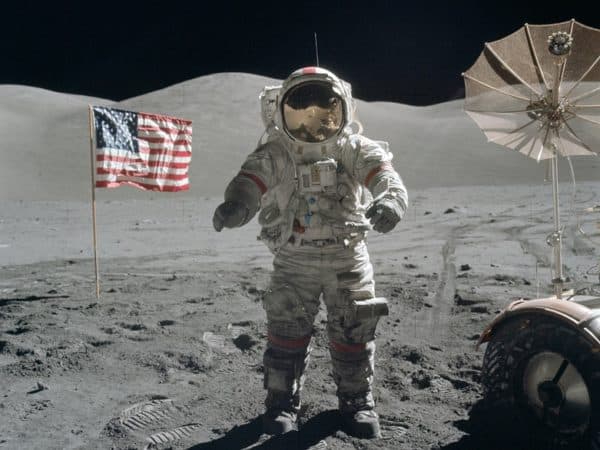
 The Manitoba Museum in Winnipeg is the latest touchdown for one of the NASA moon rocks. A new exhibit at the museum focuses on the moon, the story behind its craters and, prominently, a real moon rock brought back to Earth during the Apollo 17 mission, currently on loan from NASA.
The Manitoba Museum in Winnipeg is the latest touchdown for one of the NASA moon rocks. A new exhibit at the museum focuses on the moon, the story behind its craters and, prominently, a real moon rock brought back to Earth during the Apollo 17 mission, currently on loan from NASA.
“We tell the story of the rock itself,” Scott Young, Planetarium and Science Gallery Manager told Global News recently. “How it was formed on the moon, how the Apollo missions went and got the rocks from the moon, why we did that, and what we learned.”
Along with the moon rock display, the Manitoba Museum will also feature interactive experiences and activities for children. “We’re doing some crater activities,” says Young, “We’ll actually be making our own impact craters, and kids will be making moon bases.” The exhibition runs until June 25, 2017.
Apollo 17 was the last of six manned missions to the moon. Launched on December 7, 1972, it successfully brought back over 100 kilograms of samples from the moon.
After a decades-long hiatus, NASA has recently announced that it will again set its sights on taking humans to the moon. While a manned mission to Mars is still on the space agency’s agenda, the newly revealed plan of the Orion program will involve assembling a cislunar (moon-orbiting) space station, starting with lunar orbiting flights as early as 2021. A total of eight assembly missions are on the books, with the ultimate purpose being to set up a way-station to test systems in preparation for an eventual trip to Mars.
The new plans are part of a shift in priorities for NASA, which will involve de-escalating the agency’s involvement with the International Space Station. For the past 15 years, NASA has flown the ISS and financially backed transportation costs for the conduct of research in low-orbit around the Earth. Not for much longer, says William Gerstenmaier, NASA’s chief of human spaceflight. “We’re going to get out of ISS as quickly as we can,” said Gerstenmaier. “Whether it gets filled in by the private sector or not, NASA’s vision is we’re trying to move out.”
NASA’s new direction is not in everyone’s favour. President Barack Obama, known to have a preference for heading straight to the Red Planet, was quoted back in 2010 as saying of a moon mission that, “We’ve been there before.” But others are supportive of the new step-wise approach, including former Canadian astronaut Chris Hadfield who told the MailOnline that we need to spend much more time in outer space to build up the technology and capabilities necessary for a Mars mission.
“The next logical destination? It’s obviously the moon, as it’s just three days away,” said Hadfield.
A host of private companies are currently jockeying for moon landing props, via the Google-sponsored contest known as the Lunar X Prize.
Started back in 2007, the competition has only recently picked up steam with a deadline of the end of December, 2016, for teams to secure a verified launch contract and the end of 2017 for completion of the mission. Aimed at inspiring innovation in robotics and space exploration, the contest requires teams to perform a successful moon landing, to drive a vehicle 500 metres on the moon and to send back video of the event to Earth.
So far, Lunar X has confirmed that four groups have secured launch contracts, including SpaceIL from Israel, Moon Express from the United States, Synergy Moon (an international project) and Team Indus from India.
Leave a Reply
You must be logged in to post a comment.




 Share
Share Tweet
Tweet Share
Share




Comment